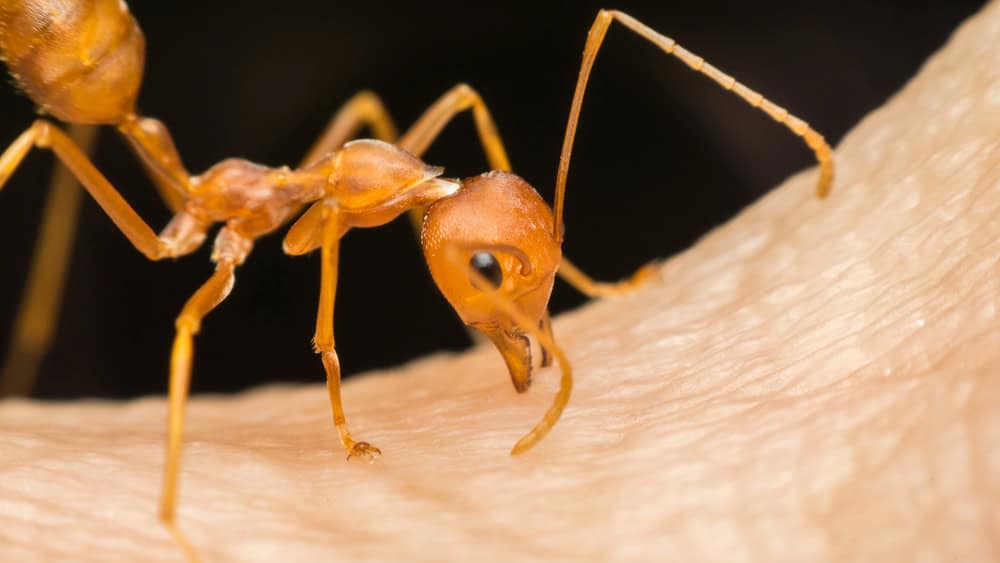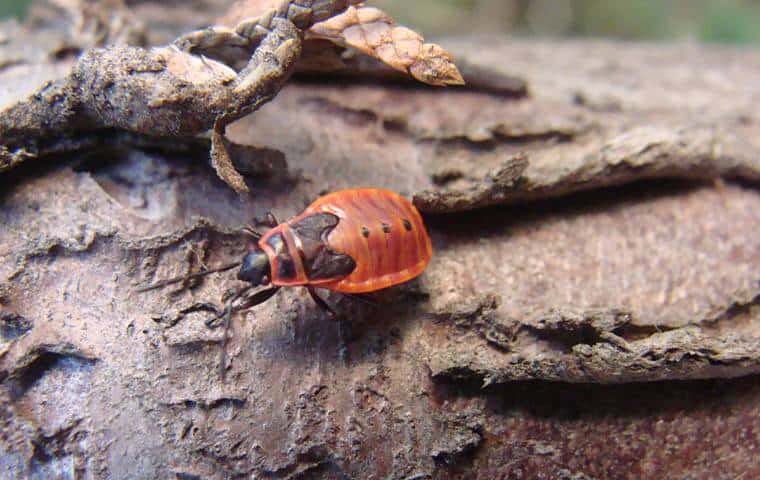If you’ve ever stepped outside to enjoy your garden or yard only to find yourself under attack from a swarm of fire ants, you know how unpleasant this invasive species can be. Fire ants are more than just a nuisance; they threaten the tranquility of our outdoor spaces and pose risks to families and pets alike. Their painful stings can ruin a summer barbecue or an afternoon playdate, making it essential for homeowners to tackle these relentless pests head-on. But fear not—there are practical solutions at hand that can help restore your peace of mind.
Choosing the right treatment is crucial, especially when balancing effectiveness with safety. With children playing and pets roaming in our yards, many conventional insecticides could introduce unwanted hazards. Luckily, there are now numerous options available that prioritize both pest management and family well-being. In this article, we’ll explore seven guaranteed treatments for banishing fire ants from your life while ensuring you keep your loved ones safe. So let’s dive in and discover how to reclaim your outdoor space from these fiery invaders!
Understanding Fire Ants
Fire ants, known scientifically as Solenopsis invicta, are notorious for their aggressive behavior and painful stings. These small reddish-brown insects typically range from a quarter to half an inch in size and are easily identifiable by their bulky bodies and distinctive two-segmented petiole. Unlike many ant species that prefer to avoid conflict, fire ants aggressively defend their territory—swarming in groups when they feel threatened. Their nests, which often appear as mounds of loose soil, can be found in sunny areas such as gardens, fields, or even along sidewalks. If disturbed, these ants will bite and sting simultaneously, injecting venom that can cause a burning sensation comparable to the feeling of fire—hence their name.
If you suspect a fire ant infestation on your property, several signs indicate their presence, including the appearance of fire ant mounds. First and foremost, you might notice mounds of soil appearing in your yard during the warmer months when these pests are most active. Additionally, keep an eye out for trails of ants marching back and forth; they are usually transporting food or larva to feed the colony. Another sign is spotting individual ants inside your home—particularly if you’ve left open food items around or if there are cracks where these crafty critters can enter your living spaces. Early detection is crucial since larger colonies can produce thousands of workers that wreak havoc on your garden plants or pose dangers to family members.
The risks associated with fire ants extend beyond just annoying bites; they can also create significant safety concerns for children and pets, particularly near active fire ant mounds. A single sting may result in localized pain and swelling but may escalate into more serious allergic reactions for certain individuals—especially young children or those with sensitivities. Pets too aren’t immune; inquisitive dogs or cats who disturb a nest could face multiple stings at once leading not only to discomfort but potential health risks requiring veterinary care. Moreover, residential areas hosting extensive fire ant infestations often struggle with damaged lawns due to their tunneling habits that disrupt soil structure and water retention, particularly around fire ant mounds.
Understanding the behaviors and signs of fire ants is pivotal in effectively managing any potential infestations around your home. By being aware of what to look for—such as telltale mounds or trails—you equip yourself with the knowledge needed to take swift action against these pesky intruders before they turn into a larger problem affecting both your property’s health and your family’s safety.
Professional Treatments
When it comes to tackling a fire ant infestation, professional pest control services are often the most effective solution for homeowners. Unlike DIY methods that may provide temporary relief, licensed pest control operators possess the expertise and tools needed to eradicate fire ants comprehensively. They understand not only how to treat existing colonies but also how to prevent new ones from establishing themselves on your property. Using state-of-the-art equipment and techniques tailored for local conditions, these professionals can reach deep into the soil where fire ants nest—something that is typically beyond the capabilities of household products.
One of the key advantages of choosing a professional service is their commitment to guaranteed treatments that often last up to one year. Many pest management companies offer warranties on their treatments, which means if the fire ants return within that period, they will re-treat your property at no additional cost. This long-term approach not only provides peace of mind but also saves you money over time by reducing repeat treatments and extensive damage caused by infestations in gardens or playgrounds where children play.
Additionally, opting for a licensed service minimizes health risks associated with pesticides. Professionals are trained to select and apply insecticides that are safe for both your family and pets while still being highly effective against fire ants. For instance, they use targeted applications that limit exposure to beneficial insects and plants in your yard—something that’s particularly important for gardening enthusiasts who want to maintain a healthy ecosystem at home.
Ultimately, trusting experts allows you to focus on what matters most: spending quality time with loved ones instead of worrying about pesky infestations. With their knowledge, proven methods, and guaranteed results, professional pest control services emerge as the smartest choice for achieving lasting freedom from fire ants while ensuring safety for everyone in your home.
Pet-Friendly Insecticides
When dealing with fire ants, homeowners who share their space with pets and children can find it challenging to strike a balance between effective pest control and safety. Fortunately, a variety of pet-friendly insecticides are available that have been designed specifically for fire ant treatment. These products are formulated using natural ingredients or non-toxic compounds that effectively target fire ants while significantly reducing the risk of harm to your furry companions and little ones.
Many pet-friendly insecticides operate by disrupting the nervous system of fire ants without causing adverse effects on mammals. For instance, insecticidal soaps and certain essential oils, such as peppermint or clove oil, can repel and eliminate fire ants on contact. Additionally, these solutions often break down quickly in the environment, minimizing any lingering impact they might have on your gardens or around play areas. It’s crucial to choose products that emphasize their safety credentials—look for labels indicating they are environmentally friendly and safe for use around pets to give you peace of mind when treating your yard.
Several reputable brands specialize in pet-safe pest control solutions. One of them is EcoSMART, which offers an array of organic-based insecticides known to be effective against numerous pests, including fire ants. Another option worth considering is Wondercide’s Outdoor Pest Control solution; it uses plant-based ingredients and has received positive feedback from both consumers and pest professionals alike about its effectiveness against unwanted insects without compromising safety. Whichever product you choose, always read labels carefully and follow application guidelines closely for the best results.
Adopting pet-friendly insecticides does not only offer immediate relief from fire ants but also promotes responsible pest management practices in your home environment. By choosing these safer alternatives, you’re making a commitment to protect the well-being of your loved ones while ensuring your living space remains enjoyable and comfortable. So enjoy those backyard barbeques again; with the right approach to pest control, there’s no need to worry about these pesky invaders!
Natural Remedies
For homeowners looking to rid their yards of fire ants without resorting to harsh chemicals, natural remedies offer a promising alternative. Two popular eco-friendly options are diatomaceous earth and borax. Diatomaceous earth is a natural powder made from the fossilized remains of tiny aquatic organisms called diatoms. When sprinkled in areas infested with fire ants, it works by dehydrating and damaging their exoskeletons, ultimately leading to their demise. On the other hand, borax, while toxic when ingested in high amounts by pets or children, can be safely used in small quantities as a bait mixed with sugar water to attract and kill fire ants.
Using these natural remedies effectively requires some careful application. For diatomaceous earth, sprinkle a thin layer around ant mounds and entry points during dry conditions—this helps ensure that the powder remains effective for longer as moisture degrades its potency. For borax bait, mix one part borax with three parts sugar and add enough water to create a syrupy consistency; then place this mixture in shallow containers near the ant trails. Always keep an eye on these baits to prevent accidental consumption by curious children or pets. Regularly reapply the granular remedies as needed until you see significant results.
While these homemade solutions can be quite effective for minor infestations, they come with both pros and cons worth considering. The primary advantage of using natural remedies is their low environmental impact; they’re often safer for your garden or yard compared to chemical treatments. Furthermore, many people appreciate the cost-effectiveness of these solutions since household items like borax can be readily available at local stores for individual mound treatments. However, one notable drawback is that natural methods may require more time and persistence than chemical treatments to achieve similar results. In addition, if not applied correctly or consistently monitored, there’s always a chance that some ants may survive or relocate rather than disappear entirely.
Ultimately, choosing natural remedies against fire ants can align well with eco-conscious values while protecting families from harsh chemicals. Still, homeowners must weigh the commitment required against potential effectiveness before fully relying on them exclusively—and sometimes coupling them with other strategies yields the best outcomes for a fire-ant-free home!
Preventive Measures
Maintaining a fire-ant-free environment requires a proactive approach that extends beyond just reactive treatments. One of the most effective strategies is to conduct regular inspections of your property, especially during warmer months when fire ants are most active. Check for any nests, often characterized by their distinctive mounds, which can appear in sunny spots in your yard. Routine inspections allow you to catch infestations early, making treatment significantly more manageable and less invasive.
In addition to vigilant inspections, it’s crucial to adopt landscape management techniques aimed at deterring fire ants from setting up residence on your property. For example, consider keeping mulch at least 12 inches away from tree bases and flower beds since this can create favorable conditions for ant colonies. Furthermore, maintaining a well-mowed lawn limits the dark and damp areas that attract these pests. Also, try incorporating perimeters of gravel around garden beds; not only does this beautify your space, but it also creates an inhospitable zone for fire ants.
Another preventive measure involves the placement of barriers using diatomaceous earth or bait stations around the perimeter of your home and garden. These acts as both detectors and deterrents to prevent fire ants from migrating indoors or into your cherished plants. Regularly applying these barriers—especially after significant weather events like rain—helps maintain their effectiveness over time.
Remember, consistent care is essential in pest control. By implementing these preventive measures regularly—not just when you spot an infestation—you can significantly reduce the likelihood of fire ants returning to invade your outdoor spaces. Taking these simple steps will not only safeguard your environment but will also allow you and your family to enjoy peace of mind year-round!
Community Approaches
When it comes to tackling fire ant infestations, collaboration among neighbors can significantly amplify the effectiveness of control efforts. Fire ants don’t recognize property lines—they can easily migrate from one yard to another, which makes coordinated action essential. By coming together as a community, residents can share information on where fire ants are spotted and strategize on collective treatment plans. For example, if one household discovers an infestation, reaching out to nearby homes allows everyone in the area to stay vigilant and take preventive measures before the problem spreads further.
Education plays a critical role in community initiatives focused on pest management, especially regarding the dangers of imported fire ants. Hosting workshops or informational sessions led by local pest control experts can empower residents with knowledge about fire ant behavior, signs of infestation, and effective treatments. These programs not only raise awareness but also foster dialogue within neighborhoods—homeowners can exchange success stories or tips that have worked for them in controlling these pesky invaders. Advocacy for community-driven solutions is key; the more people are informed about pests like fire ants, the more proactive they will be in protecting their families and gardens.
Shared resources form another vital pillar of communal efforts against fire ants. Communities can organize neighborhood pest control days where professionals offer their services at discounted rates for fire ant treatments when multiple households sign up together. Such initiatives not only lighten financial burdens but also increase the likelihood of a thorough eradication process that benefits several properties simultaneously. Moreover, pooling resources enables communities to invest in higher-quality treatments or equipment, like spreaders, that may be too costly for individuals seeking DIY solutions.
By fostering a sense of shared responsibility and collaboration towards managing fire ants, neighborhoods increase their chances of long-term success against infestations while cultivating strong bonds among residents. Ultimately, working together not only promotes safety and environmental well-being but also enhances overall community spirit—turning what could be a frustrating problem into an opportunity for teamwork and engagement.
Common Mistakes to Avoid
When it comes to combating fire ants, many homeowners often jump the gun with DIY treatments, only to end up frustrated and disheartened. One of the most common pitfalls is applying a product without fully understanding its effectiveness or the specific type of ant they are dealing with. For example, using an insecticide designed for other pests may not have any impact on fire ants, which could lead to wasted time and money while the infestation continues unabated. Prioritizing proper identification before selecting a treatment is crucial; this can mean looking up species characteristics online or consulting local pest control resources.
Another frequent mistake lies in the failure to follow through with preventive measures after initial treatments, such as applying granular insecticides. Many homeowners assume that once they’ve dealt with a visible problem, their yard is safe from future infestations. This mindset can be detrimental as fire ants often return if no long-term strategy is in place. Regular inspections of your garden and immediate removal of food sources—like fallen fruit or birdseed—are key strategies in keeping these invasive pests at bay.
Lastly, neglecting timing when applying treatments can significantly reduce their effectiveness. Homeowners might spray during peak ant activity hours when it’s easiest to see them but miss out on ensuring that products penetrate deep into nests that may be well-hidden underground. The best window for applications typically occurs early in the morning or late afternoon when temperatures are cooler and ants are more likely to forage close to the surface. By being mindful of these common mistakes, you can save yourself considerable hassle down the line and effectively kick those pesky fire ants to the curb!
Final Thoughts on Fire Ant Control
Addressing your fire ant problem doesn’t have to be overwhelming. We’ve explored a variety of effective methods that include professional treatments, pet-friendly insecticides, and natural remedies. Each approach plays a vital role in keeping your home and garden safe from these irritating pests while ensuring the well-being of your loved ones.
As you tackle immediate solutions, remember to also consider long-term prevention strategies. Simple actions like regular inspections and community awareness about fire ant treatment can make a big difference. For those seeking lasting results, don’t hesitate to reach out to professional pest control services that offer mound treatment options. They can provide tailored treatments that prioritize safety for your family and pets. Say goodbye to fire ants with confidence!




